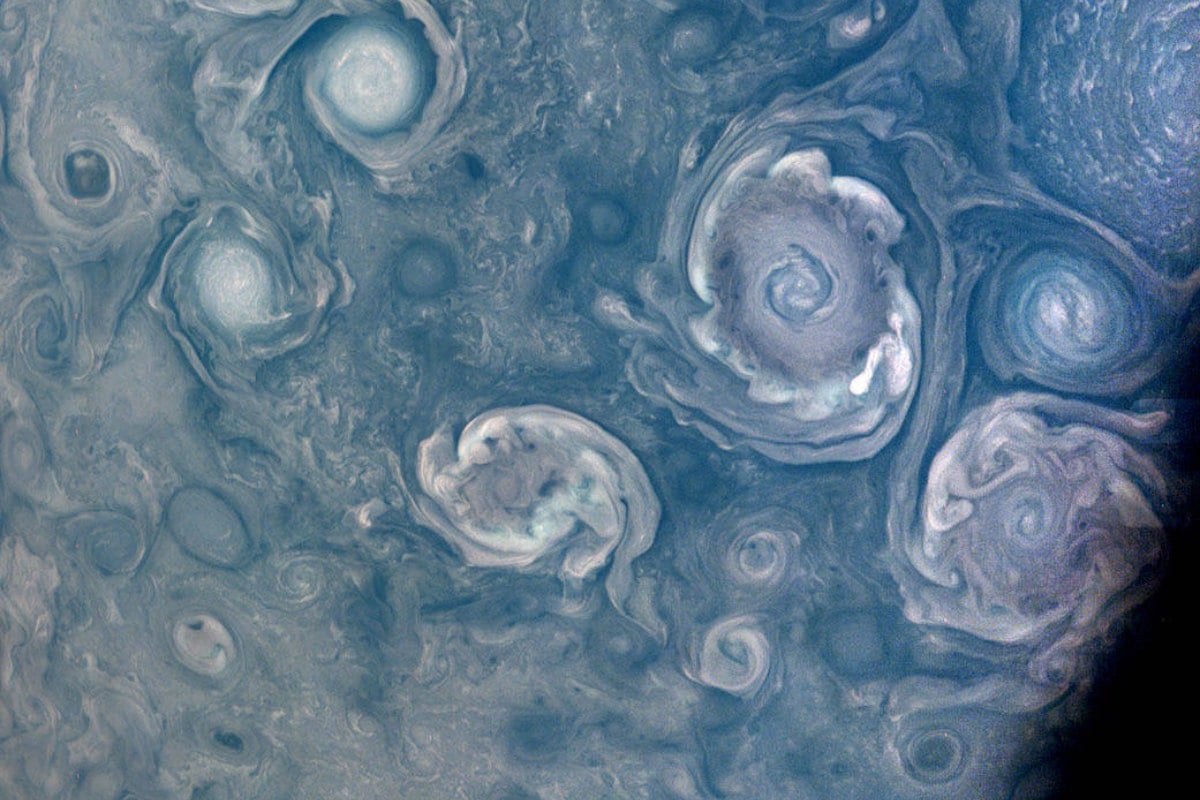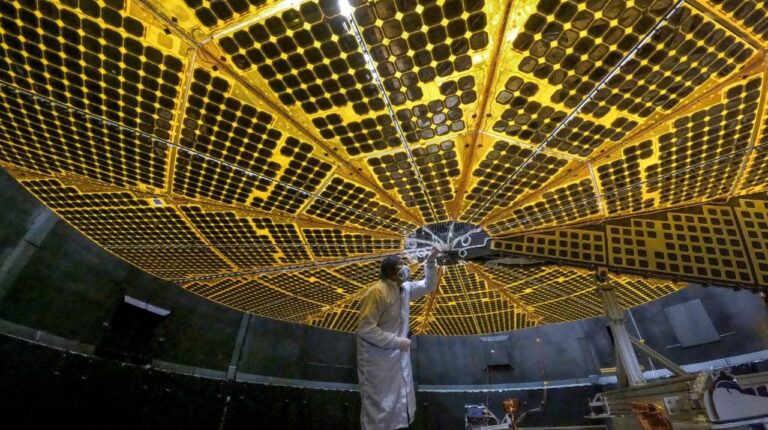
Juno is on its extended mission and will continue to investigate Jupiter through September 2025 or until the end of its life.

The Juno Jupiter mission of US space agency NASA has completed its 43rd close flyby of the biggest planet of our solar system. And, in the process, it has delivered a phenomenal picture of the surface. The shot features fascinating vortices or hurricane-like spiral wind patterns forming near Jupiter’s north pole. The Juno mission flew past close to Jupiter on July 5 this year. It clicked the striking photo using its JunoCam instrument.
While the storms look enchanting in the picture, they can be quite powerful and massive with a height of 50 kilometres and spread hundreds of miles across the planet. They also hold vital information about Jupiter’s atmosphere. Studying their formation can give scientists an insight into the fluid dynamics and cloud chemistry that create Jupiter’s other atmospheric features.
Scientists will be analysing the different shapes, colours, and sizes of the vortices seen on the planet. The difference in colour and shape is also seen in the cyclones that form on Earth. For instance, cyclones that spin counter-clockwise in the northern hemisphere and clockwise in the southern hemisphere and anti-cyclones which behave the other way differ in colour and shape.
NASA has launched a citizen science project called Jovian Vortex Hunter which allows people to locate vortices in the picture and help the space agency categorise them.
NASA’s Juno spacecraft left for its five-year journey on August 5, 2011, and arrived at Jupiter on July 4, 2016. It took five years to reach the planet and entered the 53-day polar orbit stretching from above the planet’s cloud tops to the outer reaches of the Jovian magnetosphere.
Juno collected a trove of data during its initial 35 orbits and captured breathtaking views of Jupiter and its satellites. Now, Juno is on its extended mission and will continue to investigate Jupiter through September 2025 or until the end of its life.
[Source=gadgets360]







Leave a Comment